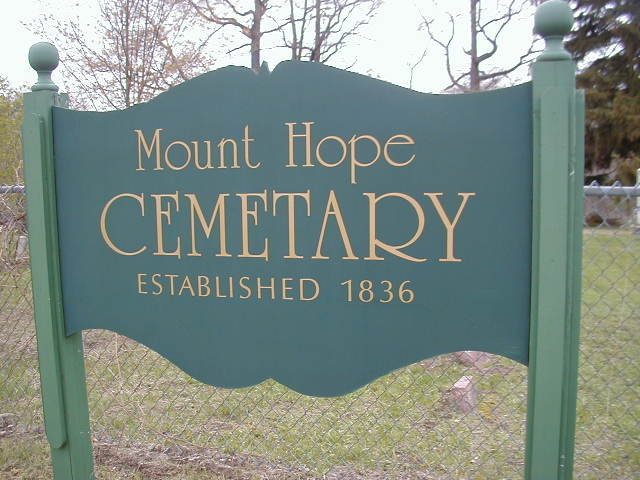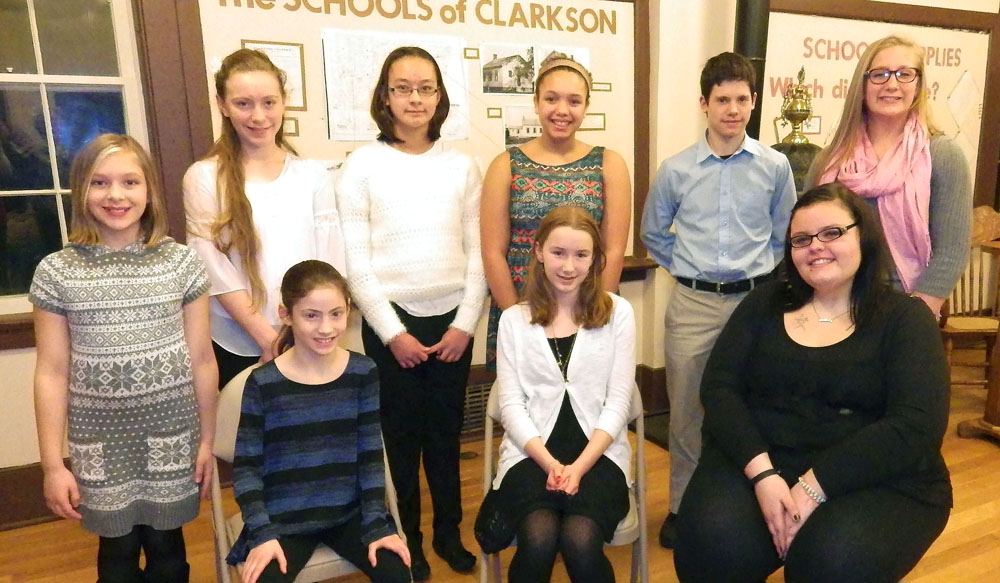Opioids: The Drug Next Door
Part 5 – Turning pain into purpose.
On October 12, 2016 Tony Stagnitto overdosed on heroin. Tony, a former Churchville-Chili student, was 27 years old when he died.
Rocco Stagnitto, Tony’s father, learned that Tony began drinking and smoking pot with his brothers at a young age after he and his wife divorced. At the age of 18 Tony was arrested for breaking into a store. Tony was sentenced to “Shock Camp” incarceration instead of jail. Shock Camp Incarceration is a program started in 1987 by an act of the New York State Legislature. It diverts non-violent felons who meet the program’s criteria from their prison sentences to a six-month boot camp-like program. Tony struggled staying clean after his release from Shock Camp.
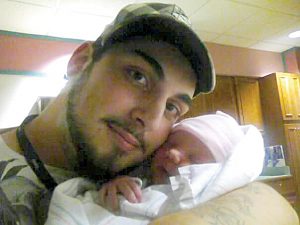
Sadly, he kept returning to his same friend circle and would slip back into using again. He was in and out of jail many times and had several overdoses but it was never enough to rid him of this deadly addiction. Tony’s final release from Shock Camp was on October 12, 2016. Tony took a bus to Rochester and arrived at 9 a.m. He met with his parole officer that morning. A few hours later he was found overdosed at 105 Evergreen Street near North Clinton in the city of Rochester. A neighbor saw a man lying behind the house and called 911.
When the ambulance arrived they found an empty Narcan (overdose rescue) kit next to Tony’s body indicating he wasn’t alone when he overdosed but the person with him, who attempted to revive him, fled the scene and left him there. The single use of Narcan did not work and by the time someone found him and called 911 Tony was brain dead. Tony was on life support for several days until his family all arrived to say their goodbyes. Tony passed away on October 17, 2016.
Rocco Stagnitto took the grief and pain of losing his son to this horrible addiction and turned it into purpose. The first time Rocco visited the site where Tony overdosed, he made a live Facebook video. The video went viral and exposed the rampant drug problems in the city; it was interwoven with the heart wrenching emotions of a father who lost his son.
Rocco’s home grown video displayed the raw pain of a father’s grief and torment from this horrible epidemic, opioid addiction. The viral video led to many television and radio interviews. Rocco and his youngest son, Sebastian, were honored to be able to speak to the public about their loss. Their hope is by telling Tony’s story it can help prevent other lives from being taken by this addiction. Although Rocco has gained notoriety in the local media, he says, “I am not a hero. My kid died. I failed.”
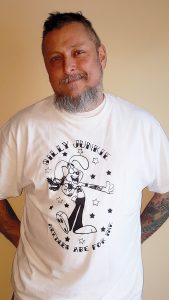
Rocco continues his fight in this opioid epidemic to honor the son he lost. He began making a line of anti-drug t-shirts. The t-shirts have a flare of anger behind them but they are truly all heart with Rocco’s passion to make an impact on saving lives. The t-shirts can be found on his Facebook page or the t-shirt Facebook page “Rage and Redemption Clothing.”
Rocco continues his mission to educate, advocate and fight this war on drugs. On February 29, 2017, Rocco organized a group of people to visit the place where Tony overdosed to clean up the area of all the drug needles and paraphernalia. Rocco recalls, “It was kinda cool how it all came together. I just mentioned on Facebook that I wanted to do this in Tony’s memory and I had over 50 people offer to help.”
Rocco contacted the city to make sure he was able to do this. The city was very helpful. He filled out an application to conduct the needle cleanup project. Trillium needle exchange program provided the bags, rakes, gloves and biohazard containers needed to collect the used needles. Rocco and his supporters had the corner cleaned up quickly and moved over to another drug riddled corner. In less than two hours Rocco’s group had collected 1,000 used needles.They were all turned over to Trillium. Rocco continues fighting on the front line of this epidemic. “Tony hated being an addict,” says Rocco. “He just couldn’t escape the grip of his addiction.” Rocco hopes that through his loss, other parents will learn from his tragedy and stay close to their kids to prevent this from happening to other families. Rocco says “Don’t be the nice guy. You’re not your child’s friend, you are their parent. Ask questions, verify that they are where they say they are. Kids can make reckless choices; it’s our job to watch out for them.”
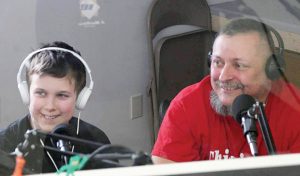
Tony’s death is a stark representation of how necessary it is that addicts in recovery move to an environment and friends that support recovery. Thanks to the New York State Opioid and Heroin Task Force, legislation funding was allocated to begin programs to help provide a recovery environment for those struggling with addiction. Recovery Living Communities and Half-way Houses are all part of the equation to help an addict stay on track.
Ann Domingos, the CEO of CASA Trinity, has been an addiction clinician since 1999. According to Ann, “Addiction is a broken brain.” Getting proper treatment and follow up is no different than requiring a heart attack patient to get help and follow up rehabilitation. Ann oversees outpatient clinics in the Southern Tier but is now in the process of opening a 25 bed residential long term living community to help with providing a safe sober community for addicts seeking recovery. CASA Trinity was able to secure almost two million dollars in grants to serve this need. The 25 bed living community will be a safe place to help addicts transition from rehab into a recovery centered living environment for up to 6 months.
Yana Khashper and Sean Smith are both recovered addicts and have personally experienced the value of living an active and fit lifestyle to help them honor their journey of recovery. What began as an accident is now opening as the area’s premiere sober active community, ROCovery-Fitness. A few years ago Sean and Yana posted on Facebook that they were going to start a hiking group to help be accountable to living a sober and healthy life style. A few people joined them and it kept growing. The group engages in various outdoor physical activities. The weather in Upstate New York limited the group’s activities.
An angel donor who had lost a family member to addiction gifted a building that became ROCovery-Fitness. The building is located at 1035 Dewey Avenue, the former Hahns Photo. ROCovery Fitness is a non-profit that is dedicated to supporting a community of physically active individuals brought together by sober living and committed to creating an environment of healing and recovery. Members are empowered to discover their inner strength and confidence through adventure, fun, fitness and camaraderie. Yana hopes to open the center in late March. It will be open to all ages and various fitness levels. The plans include a clubhouse, group classes, yoga, meditation, boot camp, strength training and high intensity training. For more information visit http://www.rocoveryfitness.org/
The right people, places and things all add to the success of a person working on their recovery. Faith based recovery programs have a strong role in helping addicts find meaning and purpose in their walk. Celebrate Recovery is a national program offered locally that provides the recovery community a safe nurturing setting in which to heal. Celebrate Recovery is a Christian recovery program for anyone struggling with addictions. It was founded in 1990 at Saddleback Church. Celebrate Recovery is a Christ-centered program with foundations firmly established in Biblical truth. The program offers a safe welcoming environment to anyone who needs help overcoming hurts, habits and hang-ups. The program is available locally at Greece Assembly of God at 750 Long Pond Road on Tuesday evenings from 6:30 to 8:30 p.m., Lakeshore Community Church 3651 Latta Road on Friday evenings with dinner at 6 p.m., and groups until 9:00 p.m., and at Father’s House 715 Paul Road on Saturdays at noon. You do not need to be a member of the church or any church to attend the Celebrate Recovery Program. Registration is not required and child care can also be provided by inquiring directly at the church.
The opioid addiction has taken far too many lives nationally and locally, but as a community we can continue to fight it with education, prevention and advocacy. A special thank you goes out to all those who shared their story and experiences in this series. “I am not what I have done, I am what I have overcome” author unknown.
To read all five parts of the series Opioids: the Drug Next Door, go to Home Page and Search Archives in the upper right corner.


